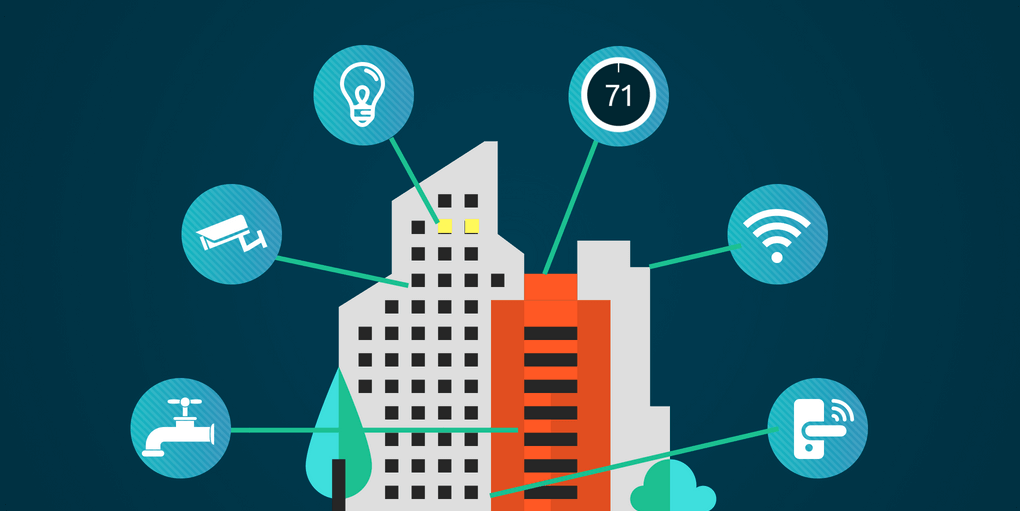Building Automation Systems
Building Automation Systems (BAS) are crucial for optimizing energy use and reducing emissions in buildings. By integrating various systems such as heating, ventilation, air conditioning (HVAC), lighting, and security, BAS can significantly enhance energy efficiency and occupant comfort.
These systems use sensors, controllers, and software to monitor and manage building systems.

job openings
View open jobs in this Solution
Example Companies
- PassiveLogic - PassiveLogic is engineering an autonomous controls platform for buildings, leveraging physics-based digital twins, generative autonomy, cutting-edge sensors, and more.
- Beebryte - Predictive HVAC Control Software for Smarter Buildings & Factories
- Zen Ecosystems - Zen Ecosystems provides intelligent energy management solutions to businesses and consumers.
- SmartAC.com - SmartAC.com is digitizing the HVAC industry to perfect the experience of home comfort.
- Infogrid - Infogrid is an AI technology company that automates building management.
- SmartAC.com - SmartAC.com is digitizing the HVAC industry to perfect the experience of home comfort.
- Bluon - Bluon is a mobile app & support platform utilized by one third of all HVAC techs in the U.S.
- Johnson Controls - Leading provider of BAS solutions.
- Trane Technologies - Provides innovative HVAC and BAS solutions.
Community
- Join the Smart Buildings Alliance community.
- Participate in ASHRAE events and working groups.
Resources
- Automated Buildings - Industry news and insights.
- Smart Buildings Magazine - Latest updates on smart building technologies.
- Building Automation Monthly - Newsletter on BAS trends and best practices.
- ASHRAE Journal - Technical articles on HVAC and building automation.
Solutions by Sector
Residential
- Smart Thermostats: Devices like Nest and Ecobee that learn user preferences and optimize heating and cooling.
- Home Automation Systems: Platforms like SmartThings and Apple HomeKit that integrate various smart devices.
Commercial and Industrial
- Integrated Building Management Systems: Solutions from companies like Johnson Controls and Siemens that manage HVAC, lighting, and security.
- Energy Management Systems: Tools that monitor and optimize energy use in commercial buildings.
Public and Institutional
- Smart Campus Solutions: BAS for educational institutions to manage energy use and enhance student comfort.
- Municipal Building Automation: Systems for managing energy use in public buildings and facilities.
Progress Made
Significant advancements in Building Automation Systems include:
- IoT Integration: The Internet of Things (IoT) has enabled more sophisticated and interconnected BAS, allowing for real-time monitoring and control.
- AI and Machine Learning: These technologies are being used to predict energy use patterns and optimize system performance.
- Energy Efficiency Improvements: BAS has contributed to significant energy savings in buildings, reducing operational costs and emissions.
Case Studies
- Empire State Building, USA: A comprehensive BAS retrofit led to a 38% reduction in energy use and $4.4 million in annual savings (Johnson Controls).
- Marina Bay Sands, Singapore: Implemented an advanced BAS to manage energy use, resulting in a 34% reduction in energy consumption (Siemens).
Lessons Learned
- Importance of Integration: Effective BAS requires seamless integration of various building systems.
- User Engagement: Occupant behavior plays a crucial role in the success of BAS. User-friendly interfaces and occupant education are essential.
- Scalability: BAS solutions should be scalable to accommodate future building expansions and technological advancements.
Challenges Ahead
- High Initial Costs: The upfront investment for BAS can be significant, which may deter some building owners.
- Cybersecurity Risks: As BAS becomes more connected, ensuring cybersecurity is a critical challenge.
- Interoperability Issues: Integrating BAS with existing building systems can be complex, especially in older buildings.
Best Path Forward
To accelerate the adoption and effectiveness of Building Automation Systems:
- Standardization: Develop industry-wide standards for BAS to ensure interoperability and ease of integration.
- Incentives and Financing: Provide financial incentives and innovative financing options to reduce the initial cost barrier.
- Cybersecurity Measures: Implement robust cybersecurity protocols to protect BAS from potential threats.
- Training and Education: Invest in training programs for building operators and facility managers to maximize the benefits of BAS.
Learn More
- ASHRAE - Leading organization for HVAC and building automation standards.
- Building Owners and Managers Association (BOMA) - Resources and best practices for building management.
- National Institute of Building Sciences - Information on building science and technology.
Image credit: Synapse Energy